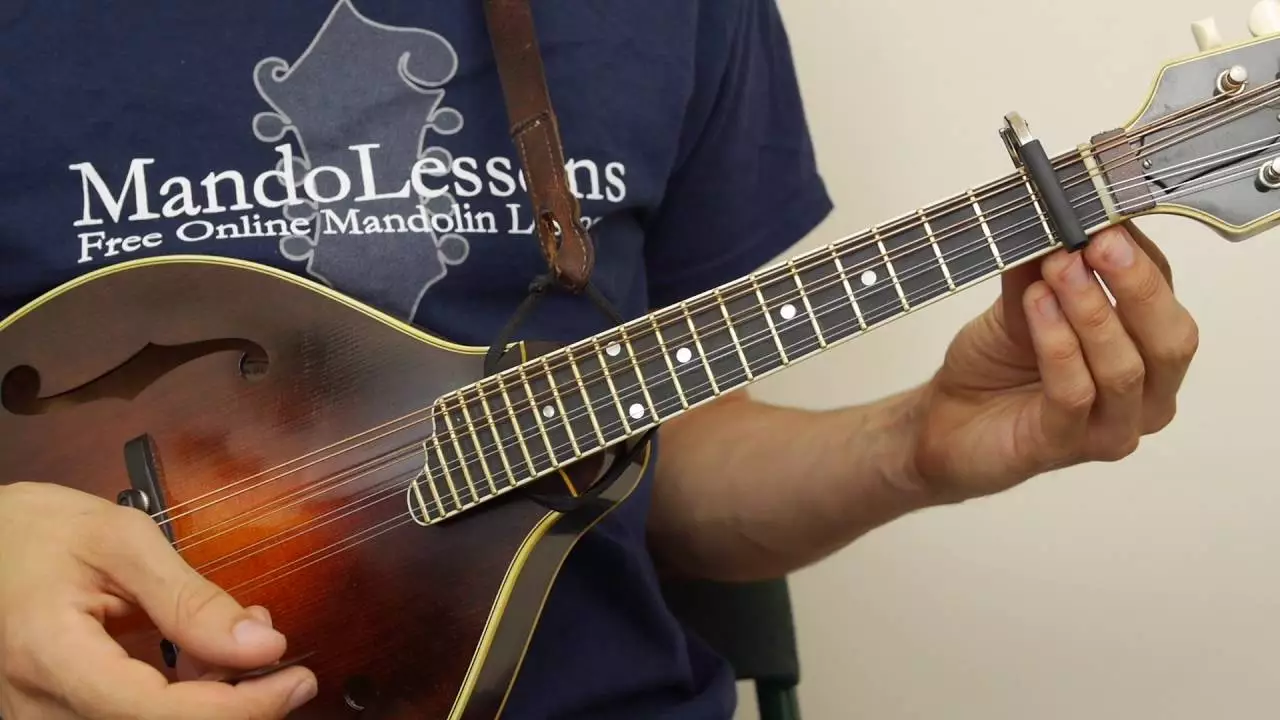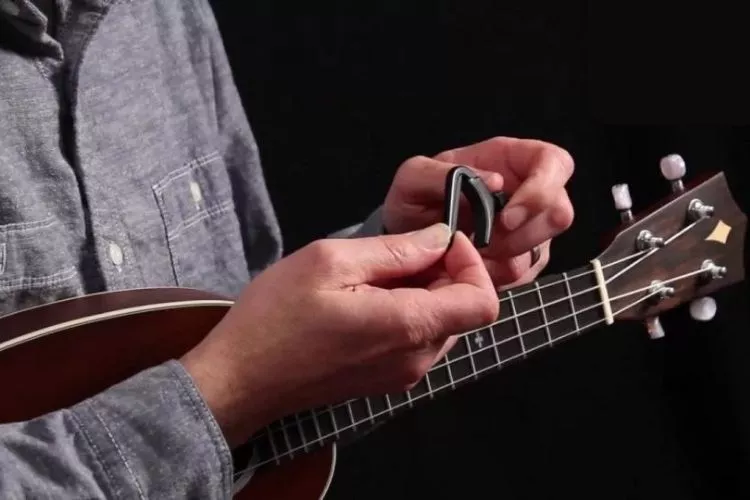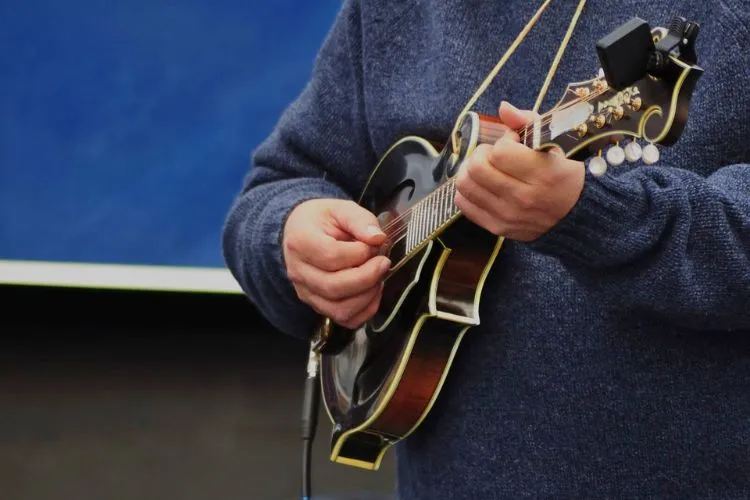The mandolin shines with a charm that is both sweet and unique. From its distinctive sound to its compact size, numerous features make it a favorite amongst many musicians.
However, an intriguing question often emerges in discussions among musicians and enthusiasts: “do mandolins use capos?”
I will dive into this interesting inquiry, exploring the use of capos in the mandolin.
Our journey will uncover the historical context of capos, their use in mandolin play, and the significance of this seemingly simple accessory on the richness and variety of music produced on the mandolin.

Contents
- 1 🎶Do mandolins use capos?
- 2 🎶Do I need to capo on the mandolin?
- 3 🎶Do beginners need a capo?
- 4 🎶How do you know when you need a capo?
- 5 🎶What happens if you play mandolin without a capo?
- 6 🎶What instruments use a capo?
- 7 🎶Are mandolins tuned like a guitar?
- 8 🎶The Role of Capos in Mandolin Playing Across Genres
🎶Do mandolins use capos?
Yes, mandolins do use capos. Capos on mandolins function similarly on a guitar – primarily to raise the pitch, facilitating the easier transposition of songs into various keys and allowing one to play in different keys while maintaining the same chord positioning.
Therefore, while not always necessary, using a capo can enhance the flexibility and expressiveness of your mandolin play.
However, as with any instrument and accessory, how and when to use a capo on a mandolin can depend on various factors such as the specific composition, personal playing style, and your level of comfort with the device.
🎶Do I need to capo on the mandolin?
No, you do not necessarily need a capo on a mandolin. While using a capo has its benefits, such as raising the pitch and facilitating easier transposition of songs into different keys, it is not essential for playing the mandolin.

Many mandolin players prefer not to use a capo and can navigate different keys by adjusting chord shapes and fingerings accordingly.
Ultimately, the choice to use a capo on a mandolin depends on individual preference, playing style, and the specific composition being played.
🎶Do beginners need a capo?
Beginners do not necessarily need a capo. As a beginner, it is more important to focus on the fundamentals of playing your instrument, such as learning scales, chords, and proper fingerings.
A capo can make some chord shapes easier to play and help with transposing songs, but it is not essential, especially in the early stages of learning.
Developing a strong foundation in technique and understanding of the instrument should come first. As you progress, you may incorporate a capo into your playing, depending on your compositions and your preferences.
🎶How do you know when you need a capo?
Knowing when to use a capo largely depends on the specific context of the piece you are playing and your preferences.
Here are some common indicators that you may need a capo:
- When you want to change the key of a song without altering the chord shapes or fingerings, you are familiar with it.
- If playing with other musicians, using a capo can help you match the key of your instrument with that of other instruments in the ensemble, allowing for a seamless blend of sounds.
- If you are facing difficulty reaching certain chord shapes or stretching between frets, a capo can make it easier to play chords by shortening the distance between them.
- Some players use a capo to create a different tonal quality in their playing, as the capo can affect the timbre and resonance of the instrument.
Ultimately, you’ll need to assess the specific requirements of the piece you are playing and your personal preferences to decide when a capo is needed.
🎶What happens if you play mandolin without a capo?
Playing without a capo means playing the chords or notes of a song in their original position on the fretboard.
Some keys might be more difficult to play without a capo due to the need for more complex chord shapes or fingerings.

However, this isn’t necessarily a disadvantage, as it can also prompt you to explore new chord voicings, expand your knowledge of the fretboard, and develop your techniques.
The important thing to remember is that a capo is a tool to aid in transposing songs and make certain chord shapes more accessible. It is not a necessity, and you can play without one.
🎶What instruments use a capo?
Capos are commonly used on stringed, fretted instruments. Besides the guitar and mandolin, capos can also be used on instruments such as the banjo, bass, bouzouki, ukulele, and balalaika.
The primary function of a capo is to raise the pitch of the strings, allowing musicians to play in different keys while retaining familiar chord shapes and fingerings.
🎶Are mandolins tuned like a guitar?
No, mandolins are not tuned like a guitar. The standard tuning for a mandolin is GDAE, which starts from the low string to the high string. This tuning is the same as a violin and is fifths apart.
In contrast, standard guitar tuning is EADGBE, sorted from the thickest string to the thinnest, and the intervals between the strings are inconsistent.
So while both are stringed instruments, they have different tunings and are played differently.
🎶The Role of Capos in Mandolin Playing Across Genres
The mandolin’s charm and adaptability have made it a prominent instrument across multiple genres, including bluegrass, folk, classical, and even modern rock.
The use of capos enhances this versatility, enabling musicians to explore various tonal ranges and creative possibilities.
In bluegrass music, for instance, a capo can be used to quickly shift between keys, ensuring the mandolin complements the banjo, guitar, and fiddle in the ensemble.
Bluegrass compositions often involve quick transitions and improvisation, and a capo simplifies the process by maintaining familiar chord shapes while altering the pitch.
Folk musicians, on the other hand, use capos to create unique voicings and add a distinct tonal character to their music.
By positioning the capo higher on the fretboard, players can produce a brighter, more resonant sound, which is particularly effective in accompaniment or solo pieces.
In classical music, capos are less commonly employed, as the genre typically emphasizes complex fingerings and precise note articulation.
However, modern arrangements occasionally incorporate capos to achieve specific effects or facilitate easier transitions between intricate passages.
For contemporary rock or fusion music, the capo offers a quick way to experiment with alternative tunings and harmonics, encouraging creativity.
Players can explore unconventional key signatures or pair the mandolin’s natural timbre with effects pedals for innovative sounds.
Additionally, capos are particularly helpful for musicians collaborating with vocalists. Adjusting the capo’s position allows the mandolin to match a singer’s preferred vocal range, creating a harmonious performance without requiring extensive retuning or relearning of chords.
While capos are a practical tool, their thoughtful use can significantly enrich the mandolin’s expressive potential, allowing players to expand their musical horizons and craft distinctive compositions.
The interplay between traditional techniques and modern accessories like capos exemplifies the dynamic evolution of mandolin playing.
Conclusion:
While mandolins use capos like guitars, their use is not essential — it’s more a matter of personal preference and playing style.
Capos can simplify playing certain songs, effectively raising the pitch of your mandolin and making chord shapes easier and more familiar.
However, they are unnecessary for all pieces, and some musicians prefer the challenge and variation of playing without one.
For beginners, understanding the fundamentals of the mandolin should take precedence over using accessories like capos.
As one advances and explores different compositions requiring varied pitch changes, the capo becomes a useful aid.
In the end, deciding whether to use a capo, like many decisions in music, depends on individual needs and circumstances.
It enriches the tonal range of the mandolin, offering an added layer of versatility to this charming instrument.
However, the masterful hands of the musician bring out the true magic of the melodies.
